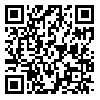BibTeX | RIS | EndNote | Medlars | ProCite | Reference Manager | RefWorks
Send citation to:
URL: http://jispp.iut.ac.ir/article-1-780-en.html
The aim of the present study was to investigate the effects of SA on UV-A, UV-B, and UV-C stressed plants. Data showed that SA counteracted the UV harmful effects on pepper. Pepper (Capsicum annuum L.) seedlings sprayed with salicylic acid (SA) and treated with UV-A (320-390 nm), UV-B (312 nm), and UV-C (254 nm) of 6.1, 5.8, and 5.7 W m-2, respectively. UV significantly increased contents of ascorbate, dehydro ascorbate, total ascorbate, proline, aldehyde, quercetin, electrolyte leakage and total ethylene. SA treatment moderated ascorbate, dehydro ascorbate, total ascorbate, aldehyde, electrolyte leakage and total ethylene increase in plants treated with UV. The quantity of proline and quercetin in plants that treated with UV and SA were significantly increased. Exogenous application (foliar spray) of SA counteracted the UV effects on pepper.
Received: 2017/01/25 | Accepted: 2017/09/26 | Published: 2018/01/15
| Rights and permissions | |
 | This work is licensed under a Creative Commons Attribution-NonCommercial 4.0 International License. |






